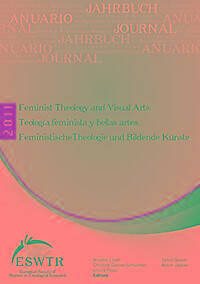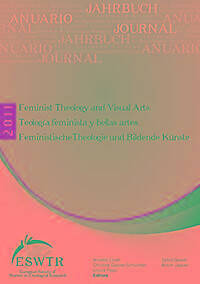
- Afhalen na 1 uur in een winkel met voorraad
- Gratis thuislevering in België vanaf € 30
- Ruim aanbod met 7 miljoen producten
- Afhalen na 1 uur in een winkel met voorraad
- Gratis thuislevering in België vanaf € 30
- Ruim aanbod met 7 miljoen producten
Zoeken
Feminist Theology and Visual Arts - Teología feminista y bellas artes - Feministische Theologie und Bildende Künste
€ 45,00
+ 90 punten
Omschrijving
At the ESWTR-conference in 2009, a subject group on Art Religion was introduced. Due to this, the idea for this ESWTR-volume on Feminist Theology and Visual Arts came up. Feminist theologians and women artists interested in religion had already met within the context of the ESWTR. Now, they could further engage in this dialogue. The insight that art might have an important function within feminist spirituality and feminist theory gave this undertaking a special power and perspective. In the articles, the question of a justification of a religious interpretation of art is a topic especially in regards to contemporary secular art, and within a historical perspective as a dangerous memory as a result of the Second World-war atrocities. The opposite question, whether or not art is applicable to religion, or, whether images should be used at all in its practice - as in the historic (patriarchal!?) controversy on image-worship, or, in the demand for a moratorium of images in the practice of meditation - didn't appear to raise questions amongst women. Yet, an emerging topic was the impact and the place that a growing number of women's religious artworks should have; that is art by women who do not receive much attention in the (post) modern art-scene and religious communities and its economy, but rather develop their work on its margins. The basic agreement amongst the authors therefore posed the question of how such a dialogue between Feminist Theology and Visual Art on a face to face level should best be realized!? The book itself represents an answer to this question.
Specificaties
Betrokkenen
- Uitgeverij:
Inhoud
- Aantal bladzijden:
- 239
- Taal:
- Nederlands
- Reeks:
- Reeksnummer:
- nr. 19
Eigenschappen
- Productcode (EAN):
- 9789042926356
- Verschijningsdatum:
- 31/12/2011
- Uitvoering:
- Paperback
- Formaat:
- Trade paperback (VS)
- Gewicht:
- 1489 g

Alleen bij Standaard Boekhandel
+ 90 punten op je klantenkaart van Standaard Boekhandel
Beoordelingen
We publiceren alleen reviews die voldoen aan de voorwaarden voor reviews. Bekijk onze voorwaarden voor reviews.










